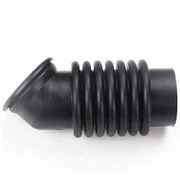The advantage and shortcoming of HNBR and EPDM rubber
Sep 12, 2022
Hydrogenated nitrile rubber (Hydrogenate Nitrile) is a nitrile rubber that has been hydrogenated to remove part of the double chain. After hydrogenation, its temperature resistance and weather resistance are much higher than that of general nitrile rubber, and its oil resistance is similar to general nitrile rubber. The general operating temperature range is -25~150 ℃.
advantage:
· Better abrasion resistance than nitrile rubber
· Excellent resistance to corrosion, tensile, tear and compression distortion
· Good resistance to ozone, sunlight and other atmospheric conditions
· Generally suitable for laundry or dishwashing detergents
shortcoming:
· Not recommended for use in alcohol, ester or aromatic solutions.
Scope of application: Widely used in environmentally friendly refrigerant R134a systems and automotive engine systems.

Ethylene propylene rubber is composed of ethylene and propylene copolymerization and the main chain does not have a double chain. Therefore, it has excellent heat resistance, aging resistance, ozone resistance and stability, but it cannot be added with sulfur. In order to solve this problem, a small amount of the third component with double chains is introduced into the main chain of EP, and sulfur can be added to form EPDM. The general operating temperature range is -50~150 ℃. Excellent resistance to polar solvents such as alcohols, ketones, glycols and phosphate ester hydraulic fluids.
advantage:
· Good weather resistance and ozone resistance
· Excellent water and chemical resistance
· Alcohols and ketones can be used
· Resistant to high temperature steam, with good impermeability to gases
shortcoming:
· Not recommended for food use or exposure to aromatic hydrogen.
Scope of application: Can be used for sanitary equipment or parts, rubber parts in braking (brake) systems, seals in radiators (car water tanks).






